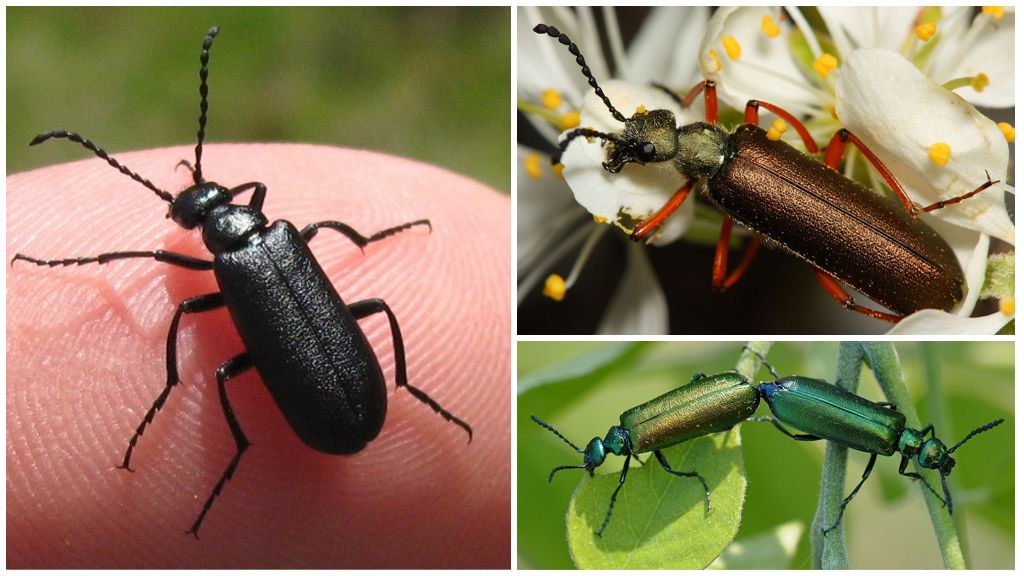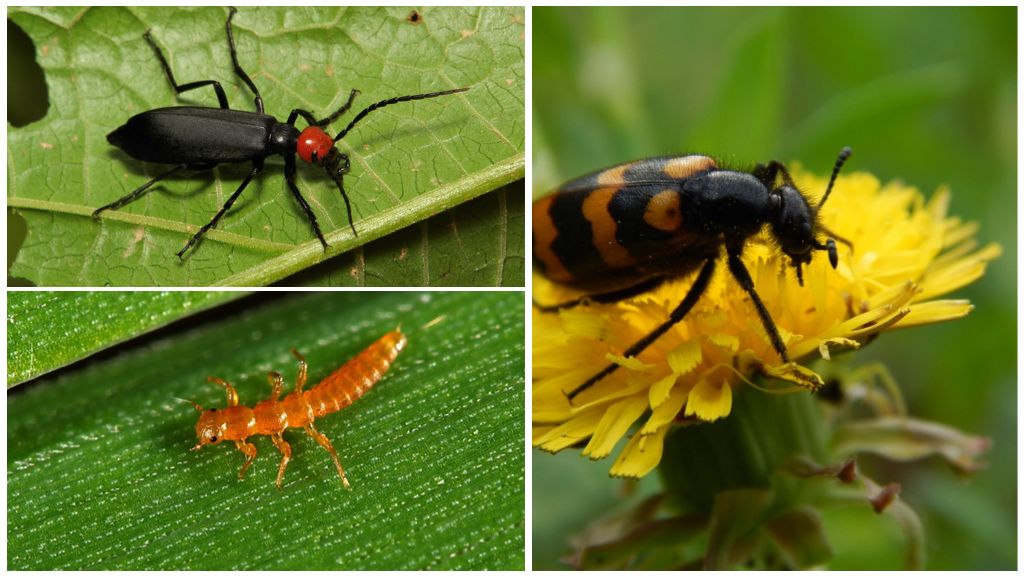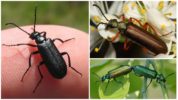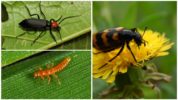- Navigator bugs
- Navigator Beetle
Bugs (Lat. Meloidae) live around the world, prefer countries with a warm climate. Insects of medium size, bright color, with an elongated body, head bowed. The name was obtained due to the presence of a special substance - cantharidin, which causes abscesses on mammalian skin. In total there are about 7500 species.
Description of appearance
Externally, the bugs are similar to each other, the coloring is different. The body is elongated, long, thick - up to 2 cm. In some species it drags along the ground. Wings are absent, elytra are short, cover only a small part of the chest. The head is small, lowered to the bottom. There are long, straight antennae on the head. A photo of the bomb bugs is posted below.
Interesting!
Different species differ in color, body length, shape. In some of them, it resembles a keg. The female holds up to 10,000 eggs. The color is dark with bright stripes or plain.
Lifestyle
Navigator bugs are parasites. The main purpose of imago is the continuation of the genus. After fertilization, up to 10 thousand eggs develop in the female body. She lays them in the soil, closer to the place where the potential victims live. Often they become bees, locust.

A few weeks later, amber-yellow larvae with three pairs of limbs - triungulins emerge from the eggs. They feed on insect larvae, finding their location due to their sensitive sense of smell.
Very often bees become victims of larvae. Triungulins make their way into the hive in several ways:
- They climb into a flower, wait for a bee to land, imperceptibly cling to its body, fly into a nest.
- Cling to several pieces, forming a living ball. Pheromones are isolated, similar to those released by a female bee. The male flies up to the ball, grabs it, drags it with him to the hive.
Inside, the larvae of carapace beetles eat nectar, stocks of honey, and bee larvae.
Triungulins molt several times, increase in size, pupate at the end of the development cycle. A few weeks later, an adult is born.
Benefit and harm
Adult males and females feed on the green part of plants; they do not bring particular harm to their vital functions. Larvae are parasites. Some species are beneficial - they reduce the number of locusts and other pests of agricultural crops. Others cause damage by destroying bee families.
You can meet the pest on any plant, since these creatures are omnivores. Lead a daily lifestyle. Gnawing leaves, shoots, flowers. In the gardens, legumes, potatoes, mustard, turnips, crops are destroyed.
Interesting!
In the past, diuretic drugs were used to make diuretic beetles to increase potency. Canceled due to side effects. Means negatively affected the work of the liver, kidneys, nervous system.

The bite of a plague beetle is not dangerous for humans, and the substance that secrete the insect, sensing danger, is poisonous. A burn, blister or abscess instantly appears on the skin. Special required bite treatment with the use of local anti-allergic, antihistamines, anti-inflammatory drugs.
Dangerous encounter with bugs cairns for cats, dogs. If swallowed, intoxication develops. Kittens, puppies die without qualified help.
How to deal with a pest
There is no clear single mechanism.Pests are ubiquitous and inhabit the entire warm period of the year. Experts propose to deal with the bugger by a biological plaster using biological, agrotechnical, and folk methods.
- Ash is sprayed on the site, ash and tobacco dust are scattered. Remedies scare away adults.
- Digging the soil in the fall, in the spring. This will help destroy the larvae.
- Hedgehogs are the natural enemies of bombing bugs. Insect venom does not act on these animals. If you settle a hedgehog in your area, you can also get rid of rodents.
It is advisable to use chemical agents if larvae of platypus are observed on plants. It is forbidden to use insecticides during flowering.





